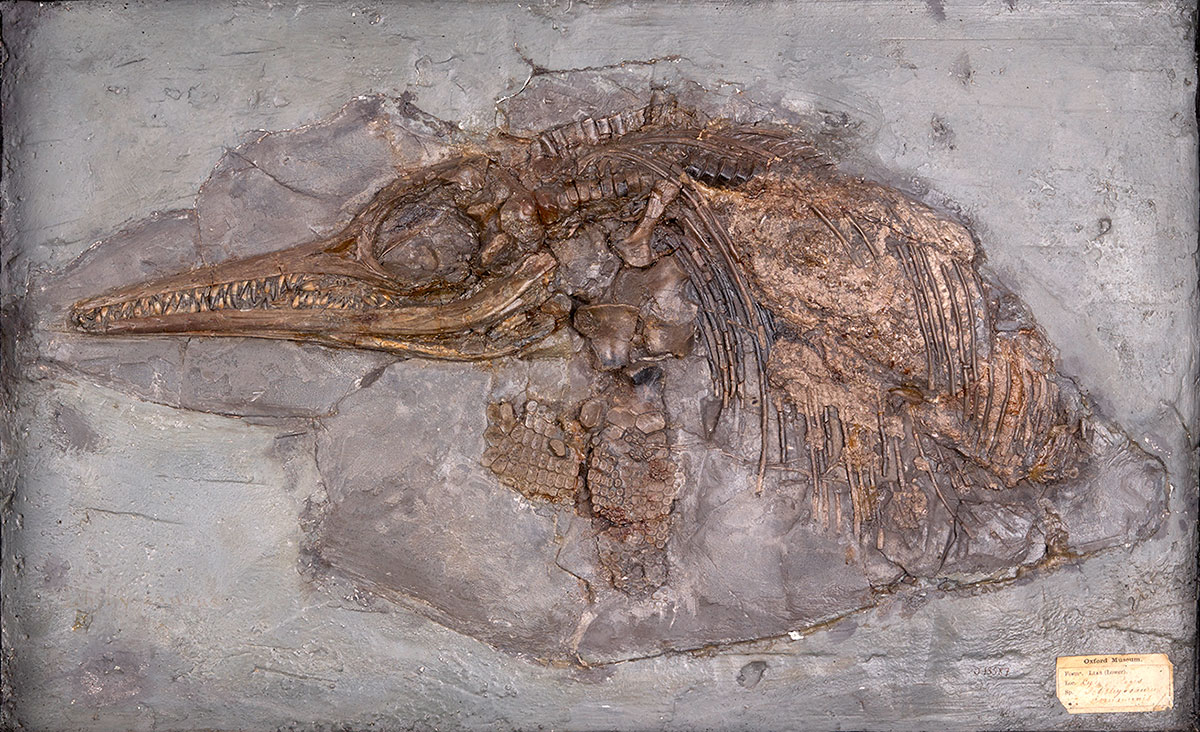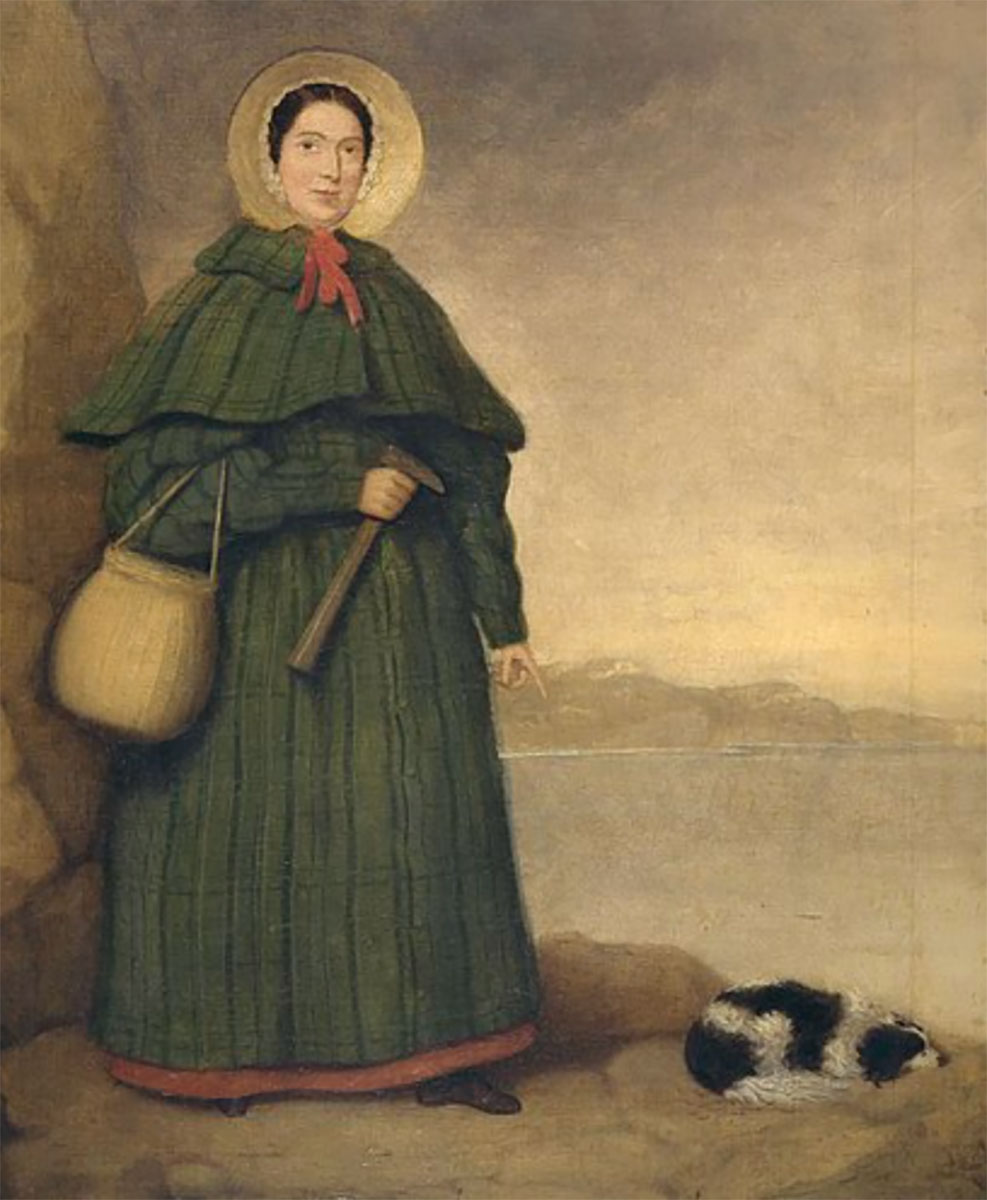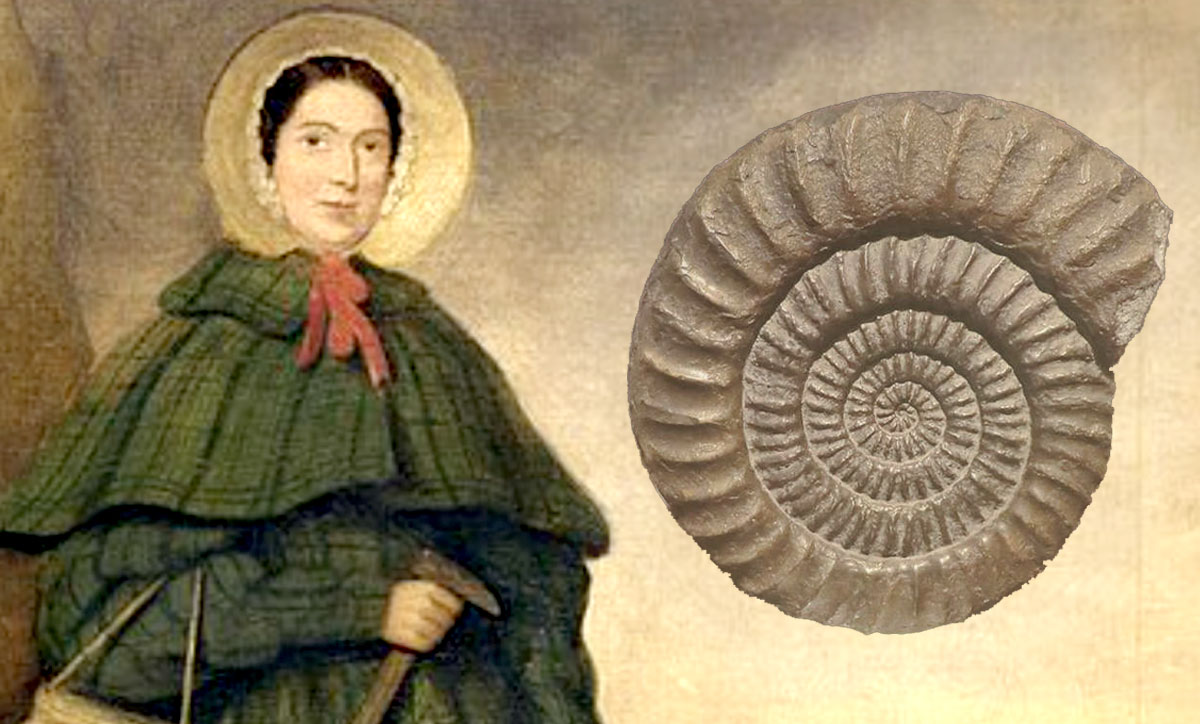
A woman walks along the beach, the waves crashing on the sand. Her dog walks beside her as she scans the cliffs for new scientific discoveries. In the corner of her eye, she spots something unfamiliar. She inspects it for a closer look and finds the skeleton of a mysterious creature. Unsure what to make of it, she brings it home.
Upon further examination, she notices it is the skeleton of a creature, the skull of which her brother had found on a previous scout along the shore. Little did they know, they were piecing together an ichthyosaur skeleton for the first time. The woman was Mary Anning.
In the paleontology field, Anning is known for revolutionizing geological and prehistorical knowledge of the planet before humans roamed the Earth. James Burnes, Exhibits Coordinator at University of Oklahoma Libraries Special Collections and Lamar University alumnus, said her work is renowned among paleontologists.
“She’s almost everywhere,” he said. “It’s ubiquitous when you learn about her history, especially because her findings were so new. (Paleontologists) can’t not talk about Mary.”
Born on May 21, 1799, Anning lived in Lyme Regis, a coastal city on the English Channel, now known as the Jurassic Coast. Anning grew up collecting fossils, such as ammonites and belemnites, that washed up on the shores and stuck upon the cliffs. She and her family were members of the working-class who sold ammonites and similar fossils they found to collectors.
“She was doing good science, by any standard,” Burnes said. “I don’t think a lot of people contextualized what Mary was doing and why she was selling fossils in the first place. There was a market for them, they weren’t just tourist trinkets.”
Anning was 12 when she and her brother discovered the ichthyosaur skeleton, the first of Anning’s many discoveries. She would go on to find plesiosaur and pterosaur fossils, fossilized fish, trace fossils and many others.
Anning did not initially receive much credit for her contributions to paleontology and geology. While she received credit for a few of her findings, most of her discoveries were attributed to the collectors to whom she sold the fossils.
However, one of her discoveries led to controversy within the Geological Society.

Mary Anning
In 1823, when Anning found the first plesiosaur skeleton, French anatomist Georges Cuvier came to believe the skeleton was a fake, arguing that the vertebrae in the bones matched no living creature and claimed it was a fusion of different animal bones. This was later disproved, but Burnes said this particular part of Anning’s history plays into the difference of amateurs and authority.
“Cuvier thought the stuff she was finding didn’t exist, and she wasn’t capable of coming to conclusions on her own that they were once living creatures,” he said. “It becomes that battle for who has that authoritative voice where they told her, ‘We want what you’re finding, but we won’t let you talk about it.’”
In the early 1800s, people believed in the literal story of Genesis, thinking that if God created an animal, he wouldn’t destroy it. Extinction was a notion that people could not fathom.
“The stuff that Anning was finding was alien,” Burnes said. “There were no modern analogs to fish with boney plates over their eyes. It was the earliest time fossils existed with nothing to carry on its lineage. A lot of it has to do with the uniqueness and newness of her discoveries. If she had just found ammonites, they would have been baubles at best. The stuff that Mary Anning found existed and had value because people like Cuvier said they were valuable.
“People put them on display, and other people go to them, and then that value is translated into us as viewers, whether as science students or just people curious about the world as it was. We get that value back, but we had to give it value in the first place.”
Anning died of breast cancer on March 9, 1847, when she was 47-years old. She is buried at St. Michael’s Church, where she has her own mural on one of the windowpanes.
Nearly two centuries after her death, her story lives on through her collections, and there are many books, even children’s books, about her life. However, there are some common misconceptions that formed overtime. For example, some people believe Anning found the entire ichthyosaur skeleton, when in actuality, her brother Joseph found the skull.
Additionally, some people believe Anning did not receive any credit during her lifetime, which is not the case. While most of her works went unrecognized, she was completely credited for her discovery of coprolites (fossilized feces) that she often found buried with ichthyosaur skeletons.
Burnes said that the myths were actually important for keeping Anning’s reputation alive.
“If you think a hoax is real and you act as though it’s real, then it might as well be real — at least until it isn’t,” Burnes said. “Those stories kept Mary attached to those finds until more was known. She could’ve easily been miscredited early.”
Anning knew what she was doing and was good at it, Burnes said.
“You couldn’t have picked at random some Victorian dude and stuck him there with a rock and dog and had the same outcome,” he said. “As much as people like to think that’s the case, it’s not a one-to-one substitution.
“It’s not about intelligence, it’s about opportunity. She created her own opportunities by physically going and seeing where this stuff was. She did a lot, especially for the history of paleontology. Not just minimum help, but overcoming pushback.”
In 2020, the movie “Ammonite” focused on Anning’s life and work, prominently on the fictional romantic relationship between Anning and her friend, Charlotte Murchison. It isn’t actually known if Anning and Murchison were ever romantically involved.
“There’s a new shift in historical thinking,” Burnes said. “If you come across a historical figure that never got married but lived with their friend who died — and had a box of scarves worth around $12 million — (people are) like, ‘Maybe they were probably together.’
“But who’s to say Mary fits that, too? In that sense, Mary didn’t fit in what should be a male-dominated field. But she also didn’t fit in what the appropriate space was for women’s science of the day.”
Anning is a pioneer of the paleontology world. Burnes said she is an underdog that everyone wants to root for.
“The stuff she found was infinitely important in the history of life on Earth, because it doesn’t exist anymore and nothing like it exists.”

Mary Anning
